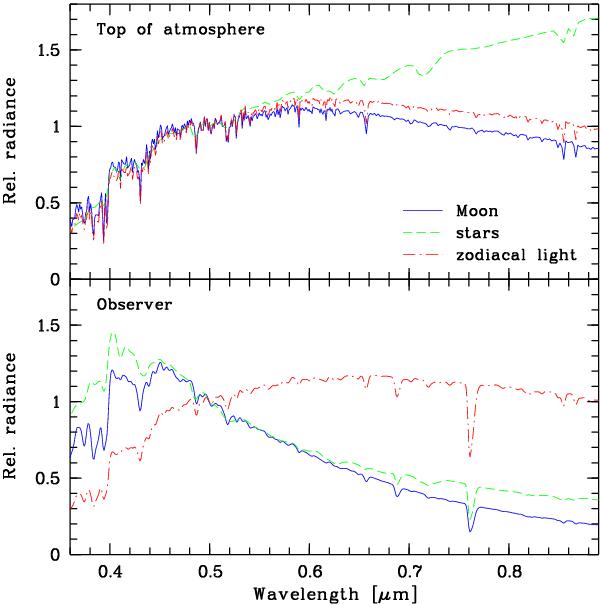Fig. 6

Effects of atmospheric scattering on radiation originating outside of the atmosphere. The displayed radiation sources are Moon (blue solid lines), stars (green dashed lines), and interplanetary dust (red dash-dotted lines). All spectra are normalised to unity at 0.5 μm. In the upper panel, a solar spectrum is assumed as top-of-atmosphere spectrum for moonlight (see Sect. 3.1). A slightly reddened solar spectrum is taken for solar radiation scattered at interplanetary dust grains (see Sect. 3.3). Integrated starlight tends to be redder than sunlight at long wavelengths (see Sect. 3.2). The lower panel shows the resulting low-resolution spectra, after light has been scattered in the Earth’s atmosphere, for observing conditions as listed in Table 1. While the lunar and stellar contributions represent scattered radiation only, the dust-related zodiacal light consists of scattered and direct light.
Current usage metrics show cumulative count of Article Views (full-text article views including HTML views, PDF and ePub downloads, according to the available data) and Abstracts Views on Vision4Press platform.
Data correspond to usage on the plateform after 2015. The current usage metrics is available 48-96 hours after online publication and is updated daily on week days.
Initial download of the metrics may take a while.


